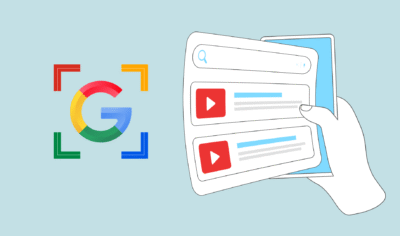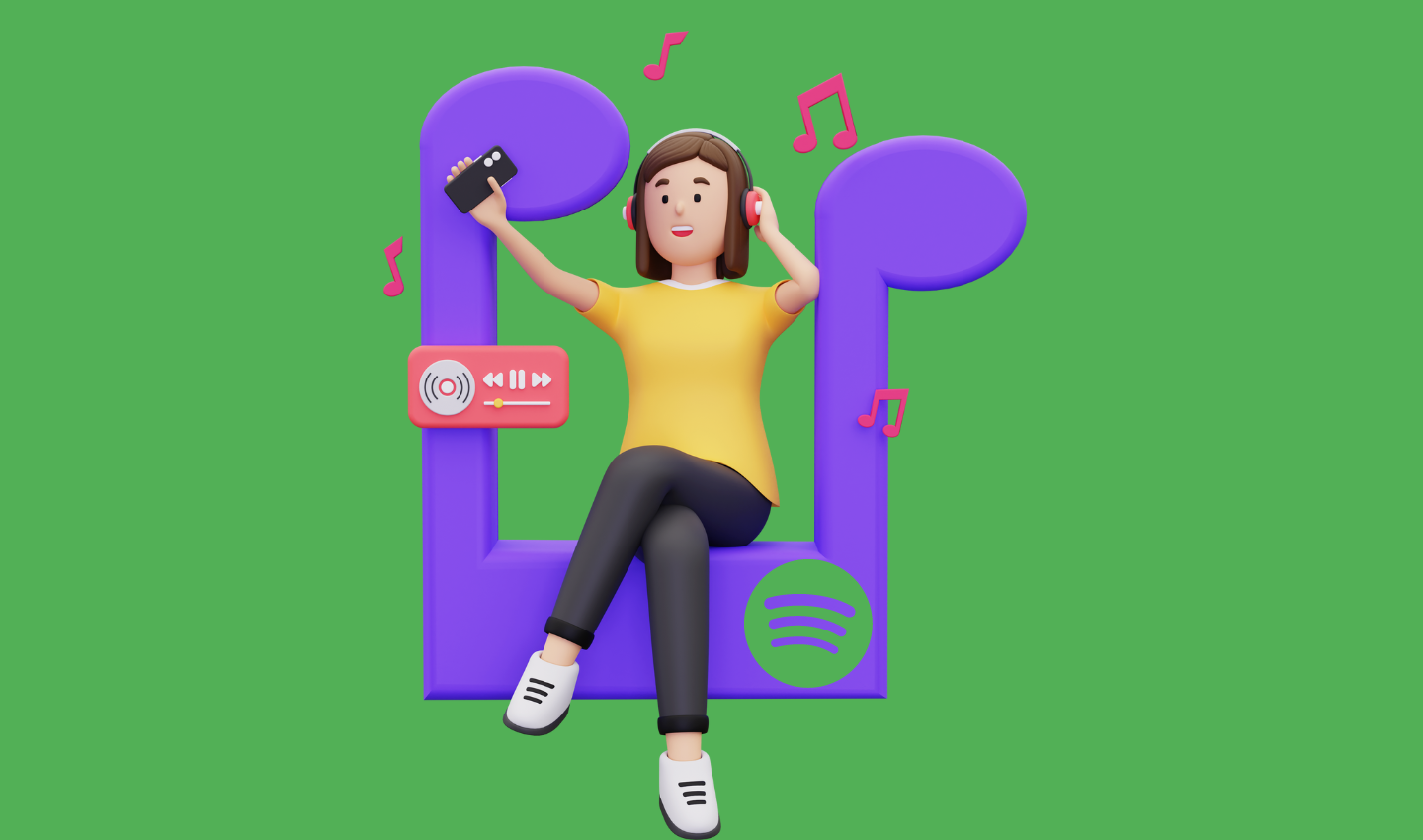
UX Writing: What Is It and Why Does It Matter?
“Easy reading is damn hard writing.”
Nathaniel Hawthorne (short story novelist)
Hawthorne could not be more accurate. When interacting with an interface, an article, a book, a poster (anything really) – we usually don’t consider the level of difficulty of the words we are processing. A novel with gripping words that draw you into another dimension in no time? An app with clear call-to-actions and instructions that allow you to navigate with ease? A captivating advertisement that has you immediately looking up the brand? That’s good writing.
But as Hawthorne states, this can be damn hard to create. That is why plenty of businesses are beginning to invest in a ‘UX Writer’ role. It takes time to perfect the art of constructing copy for your product. So in this article, we will delve into a bit of UX Writing, what it is, and why it matters.
Table of Contents
What is it?
You will recognise bad UX copy if you are interacting with a product and are confused about what button to press, or you’re unsure what the instructions even mean.
Good UX copy is almost always invisible.
When you write copy from a user experience perspective, your main goal isn’t to upsell the product (albeit important). It is to ensure that the user doesn’t have to think an awful lot. It’s not primarily concerned with selling, storytelling or building a brand image (although these are all helpful in other aspects of the product). Instead, it’s focused on getting users where they need to be.
It is then necessary to note that UX Writing does differ from regular copywriting. Whilst both skillsets and approaches ultimately want the same outcome – a celebration-worthy customer conversion – UX copy prioritises and centres around user goals.
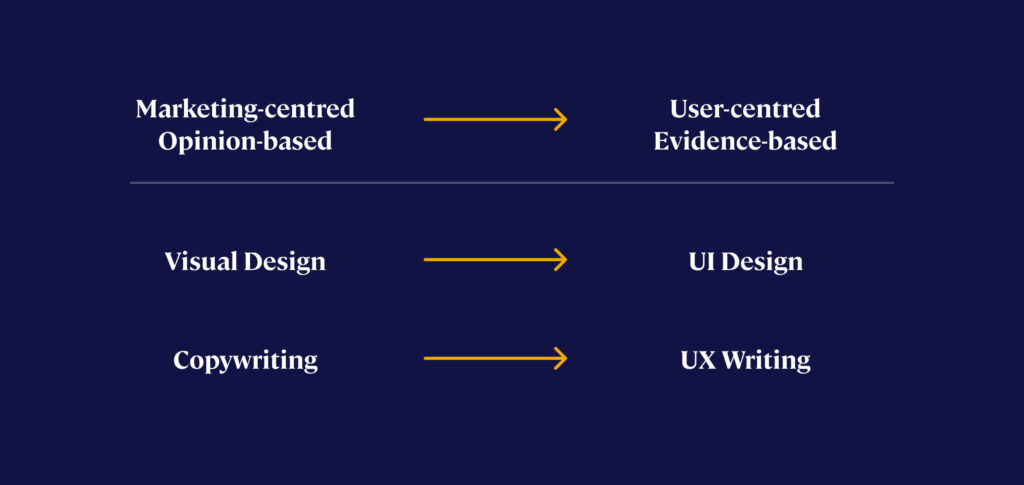
Why does it matter?
Well, in short, because it is a pivotal part of the user’s experience. They care what words are put in front of them.
All the UX and UI-related colour and psychology-based design hacks only work when coupled with text. If a customer cannot understand the instructions, they may not purchase or complete the task, resulting in a loss of revenue. If users struggle to understand your product, this may also result in a surge in customer tickets which can overwhelm the customer service team.
For a user, compelling copy creates an exciting and inviting experience. It also allows them to navigate with ease through any flow provided by the product and finish their interaction with a sense of accomplishment or calmness – not frustration or confusion (a.k.a, what we don’t want). This can lead to increased conversion, and the user might recommend this ‘super-easy and fantastic’ product to a family member, work colleague or friend, further growing your audience.
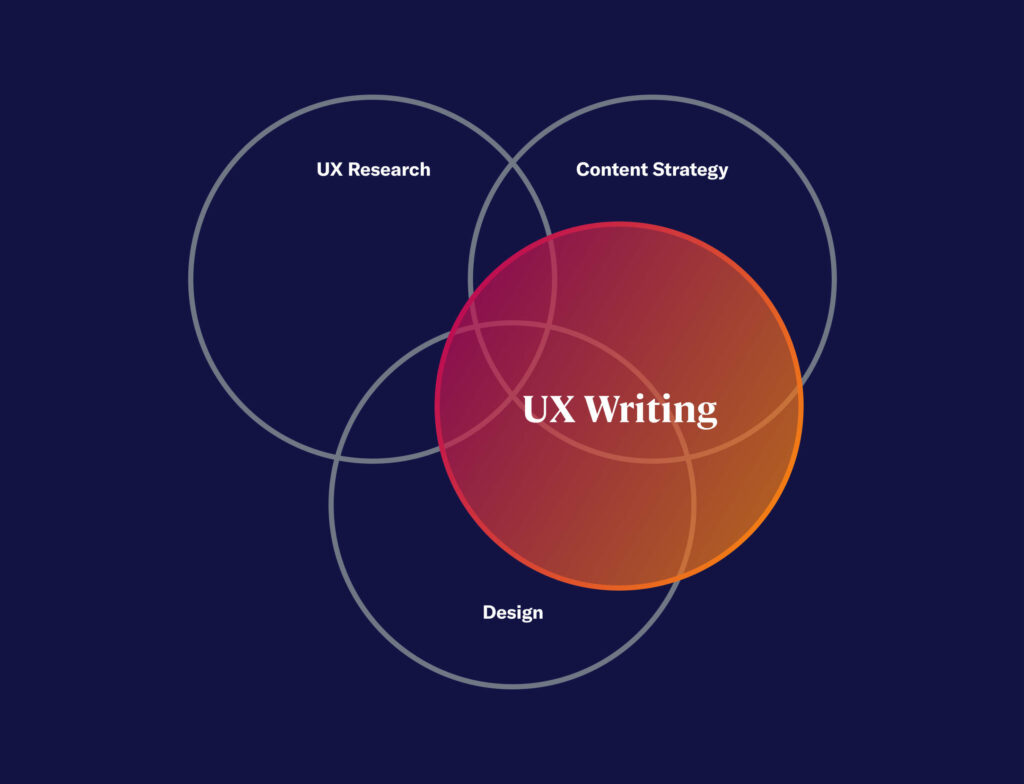
As you can see in the diagram above, UX Writing plays a part in multiple aspects of product design process. During our research stage, we take note of asking users what they think of copy and observe their interaction with the copy. The user wants and needs are jotted down, which are then used as a strong foundation for how we phrase things later on in the designs. We also implement a brand tone of voice when strategising, which is then considered when creating the copy in the design phase.
From a business or client perspective, copy can have a considerable impact on SEO. Carefully crafting your copy can help your visibility from a search engine. Whilst the user experience should always be at the forefront of your writing approach; it is good to note that this skillset can have other fantastic benefits and opportunities.
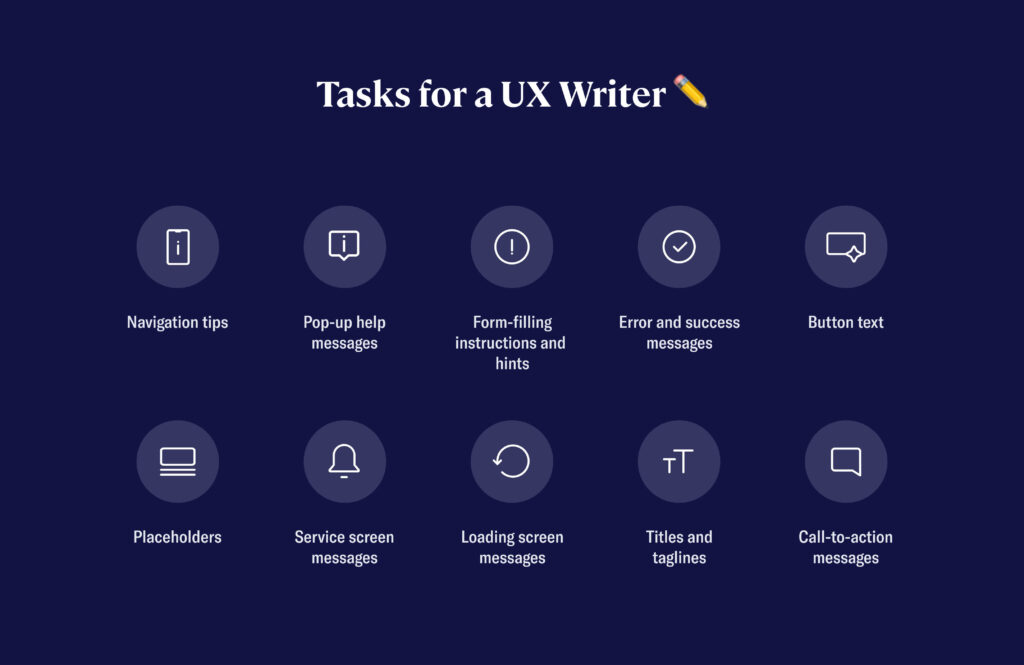
We may associate the term “writing” with big chunks of text, but UX Writing is so much more than this. Any written content on an interface can count as UX writing.
Above is a list devised by The Mind Studios of some areas in which UX Writing plays a critical role. Whilst UX Writing is not limited to just these areas; this shows how prevalent the skillset truly is across a multitude of visual design aspects and components.
What may seem like a little interaction, such as a helpful tip or a loading screen message, can directly impact how a user views your brand and your product.
Our Go-To Checklist
Below is a concise checklist that encourages us to keep usability in mind when constructing copy for a website.
Whether we’re just about to start drafting up some copy, or reviewing a jam-packed project and making finishing touches, it is handy to ask ourselves the following questions:
- Clear – Will this bring the user to the next step with ease?
- Concise – Can the copy be simplified in any way?
- Actionable – if the user encounters an error, is there copy available that helps them get back on track?
- Empathetic – is the tone of voice or choice of words appropriate for the user’s state of mind at this point and within the context of the product?
- Inclusive – are there words that all users might not understand?
- Accessible – Does the copy help enhance the user experience for users with potential impairments?
This checklist can be used as a guide to go off when reviewing your UX copy. In our next article, we’re planning to delve into some helpful tips and tricks so that you can get the ball rolling – so stay tuned!
Wrap Up
In such an oversaturated digital market, you usually only have one singular chance to grab a user’s attention and convert them over to your product. UX Writing is pivotal in compelling user interest and streamlining your services. Each word serves a purpose — either solving a problem for users or eliciting a desired emotional response.
Every UX writer knows that the shorter something is, the harder it is to write.
A product can consist of hours upon hours of intense research, ideating, prototyping and testing, but at the end of the day – the aim is to have an ‘effortless’ application. So yes, UX Writing can be damn hard, and ironically, excellent copy usually goes unnoticed. But we are putting in the hard yards so that our users don’t have to. Which is really the ultimate user experience goal – isn’t it?
Take your company to the next level and get results with our world class user experience, interface design and implementation.
Get a FREE 30 min Strategy Session

Related posts
Enhancing SaaS with UX/UI
In today’s highly competitive SaaS (Software as a Service) market, one of the most significant challenges companies face is demonstrating […]
My Spotify: Everything You Need to Know About Spotify’s Latest Personalization Feature
Spotify, the leading music streaming service, has once again pushed the boundaries of personalized music experiences with the introduction of […]
Design Psychology: 4 Principles that Empower Designers – Part 2
This is part 2 of our 4-part series on basic design psychology, tackling design for humans and for the lazy. […]
Creative product design that gets results
Take your company to the next level with world class user experience and interface design.
get a free strategy session
